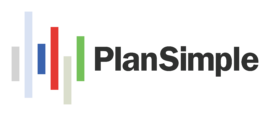The SECURE 2.0 Act of 2022 is bringing some big changes to 401(k) and 403(b) plans, including a new rule that requires most newly established plans to include automatic enrollment. With the 2025 deadline approaching, it’s important for employers to understand what this means and how to prepare.
Who Needs to Pay Attention to the New Auto-Enrollment Rules?
If you started a 401(k) or 403(b) plan on or after December 29, 2022, you’ll need to include an Eligible Automatic Contribution Arrangement (EACA) beginning in the 2025 plan year.
Plans that were created before this date—called pre-enactment plans—won’t have to make this change.
Important Deadlines to Keep in Mind
Here are some key dates to be aware of:
- December 29, 2022: Plans established on or after this date must comply.
- January 1, 2025: Mandatory auto-enrollment must be in place for affected plans.
- March 17, 2025: IRS comment period closes for feedback on the proposed regulation.
- April 8, 2025: Public hearing on the new rules.
How Auto-Enrollment Works
If your plan is affected, you’ll need to automatically enroll eligible employees in the retirement plan. The default contribution rate has to be at least 3%, increasing by 1% each year until it reaches between 10%-15%. Employees can opt-out or adjust their contribution rate if they choose.
Employers must also offer a withdrawal option for employees who want to remove their contributions within a set timeframe. Additionally, default contributions need to follow the Qualified Default Investment Alternative (QDIA) rules for investment.
Are There Any Exceptions?
Yes! Some types of businesses and plans won’t have to follow this rule. These include:
- Plans that were created before December 29, 2022.
- Small businesses with 10 or fewer employees.
- New businesses that have been around for less than three years.
- Government and church plans.
Why This Matters
Auto-enrollment helps employees build their retirement savings without having to take action on their own. It’s been shown to boost participation rates and help workers become more financially secure.
For employers, this can mean:
- Higher employee satisfaction and financial well-being.
- Smoother compliance with retirement plan regulations.
- Better employee retention by offering strong benefits.
What Employers Should Do Next
To get ahead of these changes, start preparing now:
- Review your current plan documents to see if updates are needed.
- Update your payroll and HR systems to handle automatic enrollment.
- Inform your employees about the upcoming changes so they’re not caught off guard.
- Work with a financial advisor or third-party administrator for expert guidance.
For more details, check out the IRS’s SECURE 2.0 Act updates and Ascensus’s regulatory updates.
Understanding these new rules can feel overwhelming, but you don’t have to navigate them alone. If you have questions about how these changes affect your business, we’re to help. Reach out today to discuss your plan’s compliance and how to make the transition as smooth as possible.

